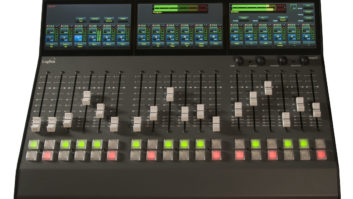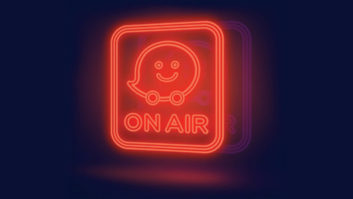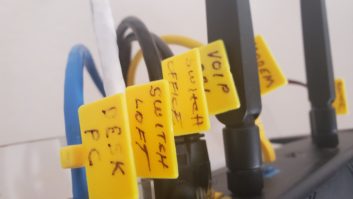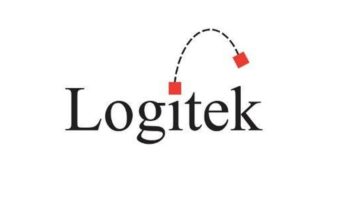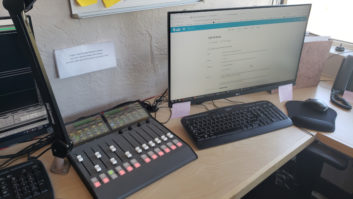WOODBRIDGE, N.J. — Having a reliable audio path is a bare-bones necessity for any radio station. With most phone companies getting rid of copper lines dedicated to audio services (like our fractional T1), it gets even harder unless you have a clear shot for a microwave link or reliable internet to work with.

Here at WOLD(LP) in Woodbridge N.J., we ran into an issue getting any sort of connectivity at our tower site. Our studio site cannot have a tower for a microwave dish, the local phone company copper DSL line would go out at random intervals at the transmitter site, and the cable company wouldn’t service our address without paying a couple thousand dollars up front to run coax. Being an LPFM, that money wasn’t available to us.
SOFTWARE
We suffered through our hardware codec stuttering while I began researching a solution that would work over an LTE link, since our site has solid service from the major providers. I discovered Logitek’s JetLink software codec after seeing one of their employees post about it on Facebook, and signed up for the beta. Since this was just a test, I used an off-the-shelf Dell PC and a Digigram soundcard to make it plug-and-play, thereby replacing our old hardware codec.
So the Saturday after last Thanksgiving, we configured the routers at the studio and transmitter site (JetLink runs on our streaming PC there), and in no time we had 96 kbps audio from point to point.
Why 96 kbps? According to my calculations, 96k running 24/7 uses roughly 22 GB per month — right around the threshold where our LTE provider throttles us during times of congestion, giving us the ability to avoid being throttled while still retaining audio quality.
This was my other gripe with our older hardware box: We were limited to MP3 as the codec choice, and the audio quality was lackluster compared to the Opus codec JetLink uses, even at 96 kbps. The better codec also allowed us to adjust our processing to better compete with all the other stations in our area, including the flamethrowers from New York City.
We installed JetLink in the fall of 2017 and it has been our primary, and only, STL since. We haven’t had any issues with dropouts setting the latency to max, which was a big improvement over our old hardware box. But what impressed me the most was the resiliency of the software — it really is set it and forget it. The only time we have had to reboot is due to extended power issues — we even tried other browser-based audio links, but they would have trouble reconnecting if there was any glitch over the connection, while JetLink would reconnect seamlessly.
Another feature I love is that since JetLink can run as a service when the machine starts up, you don’t need to log into Windows for it to crank back up after a power interruption. That is helpful since our transmitter site doesn’t have a generator.
I gave my feedback to John Davis and the team at Logitek as to how I liked the beta software, what was buggy and what features I would like added. They worked with me debugging sound card setting gremlins as well as adding the ability for JetLink to use a friendly URL instead of an IP — we don’t have a static IP at the studio end, so I use a No-IP URL redirect to make sure it can always connect to the studio in case the router reboots.
Overall, we couldn’t be happier with JetLink, and thanks to the team at Logitek we’re able to keep cranking out New Jersey’s Greatest Hits with nary a blip or hiccup coming out of the speakers.
For information, contact John Davis at Logitek Electronic Systems in Texas at 1-713-664-4470 or visit www.logitekaudio.com.






